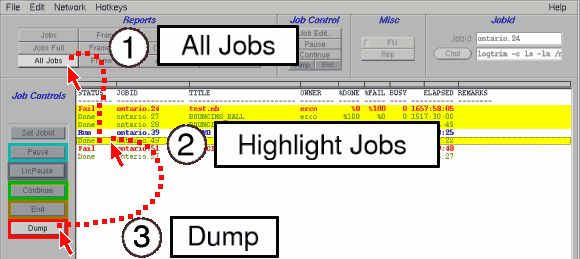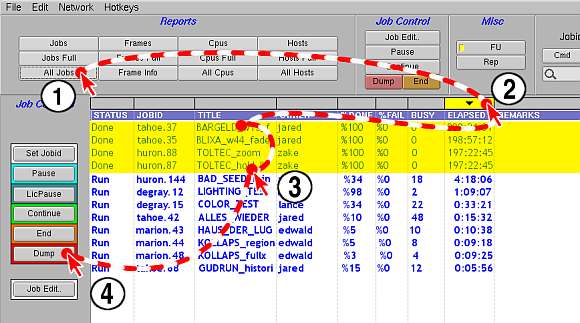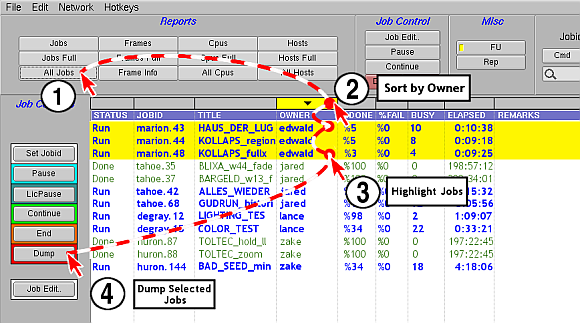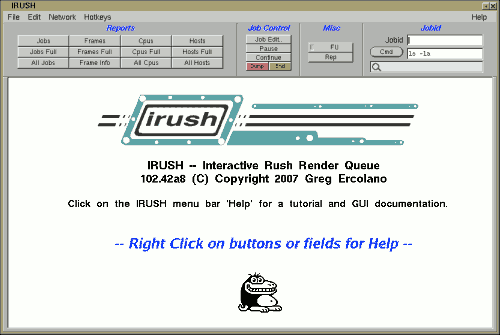|
Dumping Your 'Current Job'
To dump only the job you're working on, you'd just use the 'Dump' button in the middle of the screen,
which dumps the job shown in the 'Jobid:' window in the upper right of irush.

Dumping the "current" job
Dumping Many Jobs
If you want to dump many jobs, even jobs that aren't yours (which might
be disabled by your sysadmin), hit 'All Jobs' to get the list of all the jobs
on the network, highlight the jobs you want to dump, then hit the Dump button at the left:

Dumping selected jobs
All the buttons on the left side of the screen affect the jobs you have
highlight, so besides dumping all the jobs, you can Pause, End, or Continue them.
How To Highlight Jobs
Note that you can highlight several jobs at a time by dragging the mouse,
or hold the CTRL key down and click on several jobs to accumulate several
individual jobs.
Sorting Jobs
You can sort jobs by any column; see Sorting.
You can also limit reports using the search filter.
Dumping Old Jobs
Similarly, to dump old jobs, just sort by 'Elapsed Time' to group the oldest
jobs together. Example:

Dumping old jobs based on elapsed time.
Dumping Jobs By Owner
Before highlighting the jobs, you can group jobs together with the sort buttons
at the top of the columns. For instance, if you want to dump a particular user's
job, click the sort button above the 'Owner' column, so that the jobs are sorted
by their Owner. Example:

Dumping jobs owned by "edwald".
Dumping Other People's Jobs
If you're not the owner of some of the jobs you're dumping, errors will show
in the gray window after you choose 'Dump'. To dump other people's jobs, you'd
need to have the "FU" button enabled.
Any error messages will appear in the gray window after you hit 'Dump'.
In some situations, your systems administrator may disable the FU button,
or limit its use to certain users. See the error message for details.
| 

